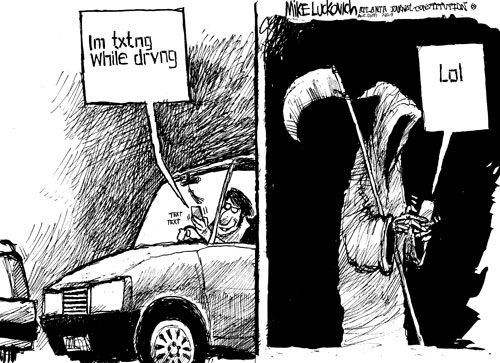 It can be a frightening experience letting your teen take the car keys and roll out of the driveway for the first time.
It can be a frightening experience letting your teen take the car keys and roll out of the driveway for the first time.
And with good reason. That’s when teens are most likely to experience their first crash. But there are things you can do as a parent to better prepare your young driver for the road ahead.
It may be as simple as downloading an app that keeps your teen from texting while driving. It may be imposing a rule that limits the number of passengers your new driver can have in the car.
Here are some steps you can take to keep your teen from running into problems – or other vehicles – on the road.
Did you know?
- Motor vehicle crashes are the leading cause of death among teens. In 2009, about 3,000 teens, ages 15 to 19, were killed in car crashes. Another 350,000 were treated in emergency rooms for injuries, according to the Centers for Disease Control.
- For each mile driven, teen drivers are four times more likely to crash than older drivers.
- The first month of driving is the most dangerous for teens. The AAA Foundation found that teens are 50 percent more likely to get in a crash during their first month on the road than after a year’s worth of experience.
- Young drivers suffer more crash-related injuries than their older counterparts. Although young drivers, ages 15-20, comprise only 14 percent of the nation’s population, they are responsible for up to 30 percent of the money spent on injuries.
How to protect your teen and others:
Avoid distractions: Discourage your teen from talking on the cell phone, changing CDs or eating while driving. Each of those behaviors could take your teen’s mind off the road long enough to cause an accident. You may want to consider a variety of cell phone apps that either disable calls or texts on the road.
Limit passengers: The chance of your teen being involved in a crash goes up when a teenage passenger is in the car, according to the Centers for Disease Control. And that risk gets even higher when there are two, three or four passengers in the vehicle. Put limits on how many passengers your child can take with them in the car.
Keep gender in mind: If your teen driver is male, pay extra attention to his driving habits. In 2006, the death rate for young male drivers was twice that of their female counterparts, the CDC reports. Teen boys are more likely to speed and provide less spaced between their car and one ahead of them.
Encourage seat belt use: You may not be able to watch your teen all the time, but getting him or her to wear a seat belt could guard against an otherwise deadly collision. Seat belts reduce the risk of a fatal crash by 50 percent. Unfortunately, young males are the least likely to buckle up.
Say no to night driving: Driving in the dark is a high-risk activity for beginning drivers. Per mile, the crash rate for teenage drivers is three times higher after 9 p.m. than during the day, according to the CQ Researcher. Overall, about 40 percent of teen motor vehicle fatalities happen at night.
Keep tabs on your teen: Don’t be afraid to monitor your teen’s driving. Take a ride with your teen. Talk about his or her driving habits. And maybe consider a gadget that will keep tabs on your child’s driving while you’re away. There are technologies out there as invasive as a driving cam, or as innocuous as a plug-in monitor that will track speeds and hard-braking incidents.
Just for fun:

